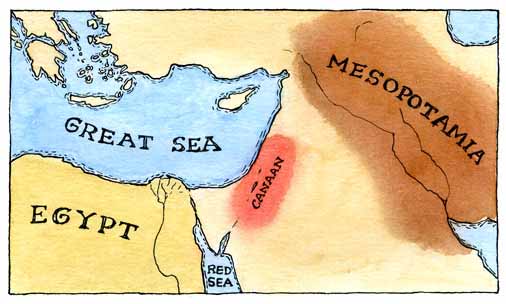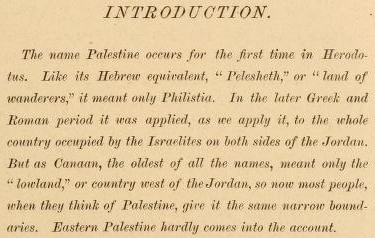|
Other Archaeological Sites / The Neolithic of the Levant (500 Page Book Online) Canaan and Palestine Palestine in Dr. William Smith's Dictionary of the Bible VOLUME III (1871) Pages 2284-2323
Selected Excerpts on Canaan (Palestine) (1) Egypt, Canaan, and Israel in Ancient Times (2) The Neolithic of the Levant (A) Neolithic 2 Palestine (Page 211) (B) Neolithic 3 Palestine (Pages 359-360) (C) Neolithic 3 South Palestine (Pages 360-368) (D) Neolithic 3 North Palestine (Pages 368-380) Called by the Egyptians Rhetenu or Kharu -- by the Syrians of the second millenium BC Canaan -- by the Hebrews Israel -- and by the Greeks Romans and Saracens Palestina -- the Holy Land has remained over the centuries a land that displays no inherent unity or cultural autochthony (*) Canaan: The fourth son of Ham ... Genesis 10:6 And the sons of Ham; Cush and Mizraim and Phut and Canaan His eldest son Zidon was the father of the Sidonians and Phoenicians. He had eleven sons who were the founders of as many tribes ... Genesis 10:15-18
10:15 And Canaan begat Sidon his firstborn and Heth 10:16 And the Jebusite and the Amorite and the Girgasite 10:17 And the Hivite and the Arkite and the Sinite
10:18 And the Arvadite and the Zemarite and the Hamathite: and The area derived its name from the preceding. In the time of Moses and Joshua it denoted the land to the west of the Jordan and the Dead Sea ...
Israel refers to both a people within Canaan and later to the political entity formed by those people. To the authors of the Bible Canaan is the land which the tribes of Israel conquered after an Exodus from Egypt and the Canaanites are the people they disposed from this land. The Old Testament of the Bible is principally concerned with the religious history of Israel in Canaan ... |


